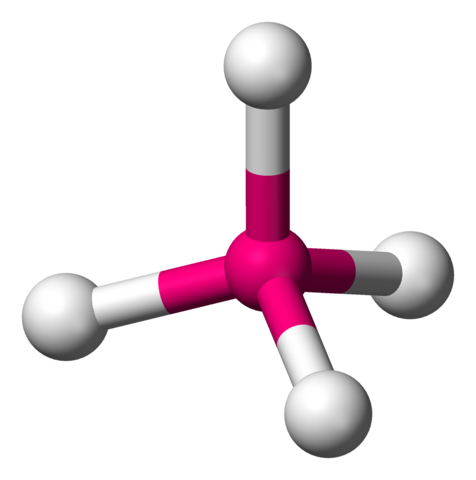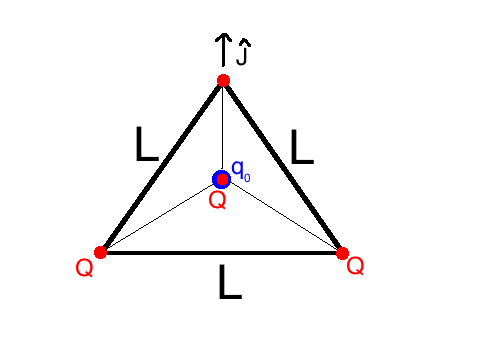Charges set up in a tetrahedron
 4 positive charges of magnitude
are kept on the corners of a regular tetrahedron, and a charge of magnitude
is kept inside the tetrahedron such that system is in equilibrium.
If the ratio
can be expressed as
then find the value of
.
4 positive charges of magnitude
are kept on the corners of a regular tetrahedron, and a charge of magnitude
is kept inside the tetrahedron such that system is in equilibrium.
If the ratio
can be expressed as
then find the value of
.
Image Credit: Wikimedia Benjah-bmm27
The answer is 59.
This section requires Javascript.
You are seeing this because something didn't load right. We suggest you, (a) try
refreshing the page, (b) enabling javascript if it is disabled on your browser and,
finally, (c)
loading the
non-javascript version of this page
. We're sorry about the hassle.
Let me define the side-length of the tetrahedron to be L. Also, I will be using a system of units where the constant in coloumb's law is equal to 1 (because the units cancel out in the expression we are trying to find).
Consider the net force on one of the vertex-charges in the J ^ direction as shown in this picture ( J ^ points in the plane of one of the faces of the tetrahedron).
The net force from the other two vertex-charges in the same plane as J ^ will be 2 L 2 Q 2 sin ( π / 3 ) = 3 L 2 Q 2 and this net force is in the J ^ direction.
The component of the force from the remaining vertex-charge in the J ^ direction will be L 2 Q 2 L x where x is the distance from the vertex to the center of an equilateral triangle. It can be shown that x = cos ( π / 6 ) L / 2 = 3 L therefore the net force in the J ^ direction on one vertex-charge from the other 3 vertex-charges is:
3 L 2 Q 2 + 3 1 L 2 Q 2 = 3 4 L 2 Q 2
Since the charges are in equilibrium, the net force from the central-charge q 0 in the J ^ direction F q 0 → Q ⋅ J ^ must equal the (negative of the) above expression.
It is clear that F q 0 → Q ⋅ J ^ = ℓ 2 − q 0 Q ( ℓ x ) where ℓ equals the distance from a vertex to the center of the tetrahedron (and x is the same as before).
To find ℓ I first found the height of the tetrahedron y = L 2 − x 2 = 3 2 L . I then noted that ℓ 2 = ( y − ℓ ) 2 + x 2 therefore ℓ = 3 8 L and so F q 0 → Q ⋅ J ^ = 9 L 2 − 1 6 2 Q q 0
(Some of what I've said may not make sense until you think about it visually.)
Thus our equilibrium constraint is 9 L 2 − 1 6 2 Q q 0 = 3 L 2 4 Q 2 ⇒ q 0 2 Q 2 = 2 7 3 2